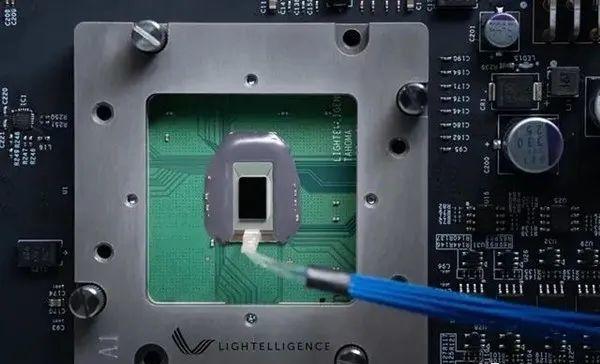With the slowdown of Moore's Law, the existing silicon processor performance improvement is gradually facing a bottleneck, photonic chip is one of the options that may replace silicon chips in the future, a few days ago a domestic company Xizhi Technology released a new generation of photonic computing processor PACE, 1GHz frequency under the performance of some operations is hundreds of times that of the GPU.
According to them, its latest high-performance photonic computing processor, PACE (Photonic Arithmetic Computing Engine), integrates more than 10,000 photon devices in a single photonic chip, runs a 1GHz system clock, and runs a specific recurrent neural network hundreds of times faster than today's high-end GPUs.

PACE successfully verified the superiority of photonic computing, which is another major breakthrough of Xizhi Technology in the integrated circuit industry.
Based on the basic principle of extremely low latency of optical execution matrix vector multiplication, PACE, the latest photonic computing processor released by Xizhi Technology, achieves low latency by repeating matrix multiplication and cleverly using tight loops composed of controlled noise, thus generating high-quality solutions to the Ising problem and max-cut/min-cut problem.
PACE contains a 64x64 optical matrix with a core consisting of an integrated silicon optical chip and a CMOS microelectronic chip stacked in a 3D package.
Research on photonic processors has also been reported before, such as in January 2021, when new methods and architectures for photonic processors were used to accelerate research on complex mathematical tasks in the field of machine learning. Dr Johannes Feldman of the University of Oxford, who is the lead author of the study, explains: "The use of light for signal transmission enables processors to perform parallel data processing through wavelength multiplexing, which results in higher computational density and only many matrix multiplications required." Compared to conventional electronics that typically operate in the low frequency range, optical modulation speeds can reach the 50 to 100 GHz range. ”
For domestic scientific research companies to enter the research and development of photonic processors, there may be a deeper meaning that at present, the research and development and mass production of 7nm and more advanced process chips in China have more restrictions and higher costs. If you replace other calculation logic or use other manufacturing material substrates, it may be more effective and more autonomous than reducing the process.